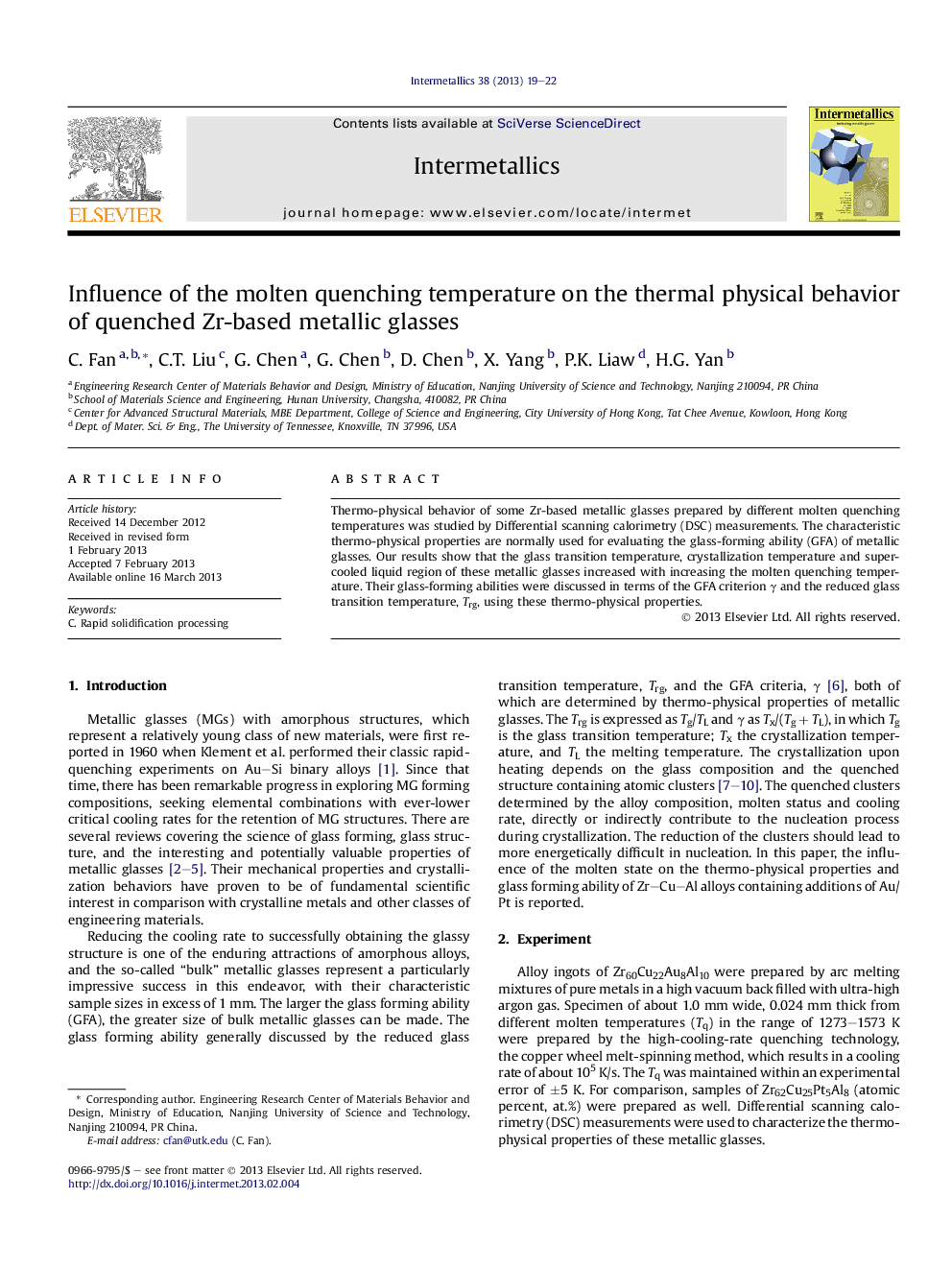| Article ID | Journal | Published Year | Pages | File Type |
|---|---|---|---|---|
| 1600321 | Intermetallics | 2013 | 4 Pages |
Thermo-physical behavior of some Zr-based metallic glasses prepared by different molten quenching temperatures was studied by Differential scanning calorimetry (DSC) measurements. The characteristic thermo-physical properties are normally used for evaluating the glass-forming ability (GFA) of metallic glasses. Our results show that the glass transition temperature, crystallization temperature and supercooled liquid region of these metallic glasses increased with increasing the molten quenching temperature. Their glass-forming abilities were discussed in terms of the GFA criterion γ and the reduced glass transition temperature, Trg, using these thermo-physical properties.
► Thermo-physical properties of quenched Zr MGs with different quenching temperatures Tq. ► Glass forming abilities were discussed in terms of γ & Trg using the thermo-physical properties. ► Except composition effect, molten quenching temperature is also a factor influencing the GFA. ► For BMGs, there is an optimum Tq, since GFA changes due to the atomic rearrangement during cooling.
